CIMA - C1 Fundamentals of Management Accounting
Подождите немного. Документ загружается.

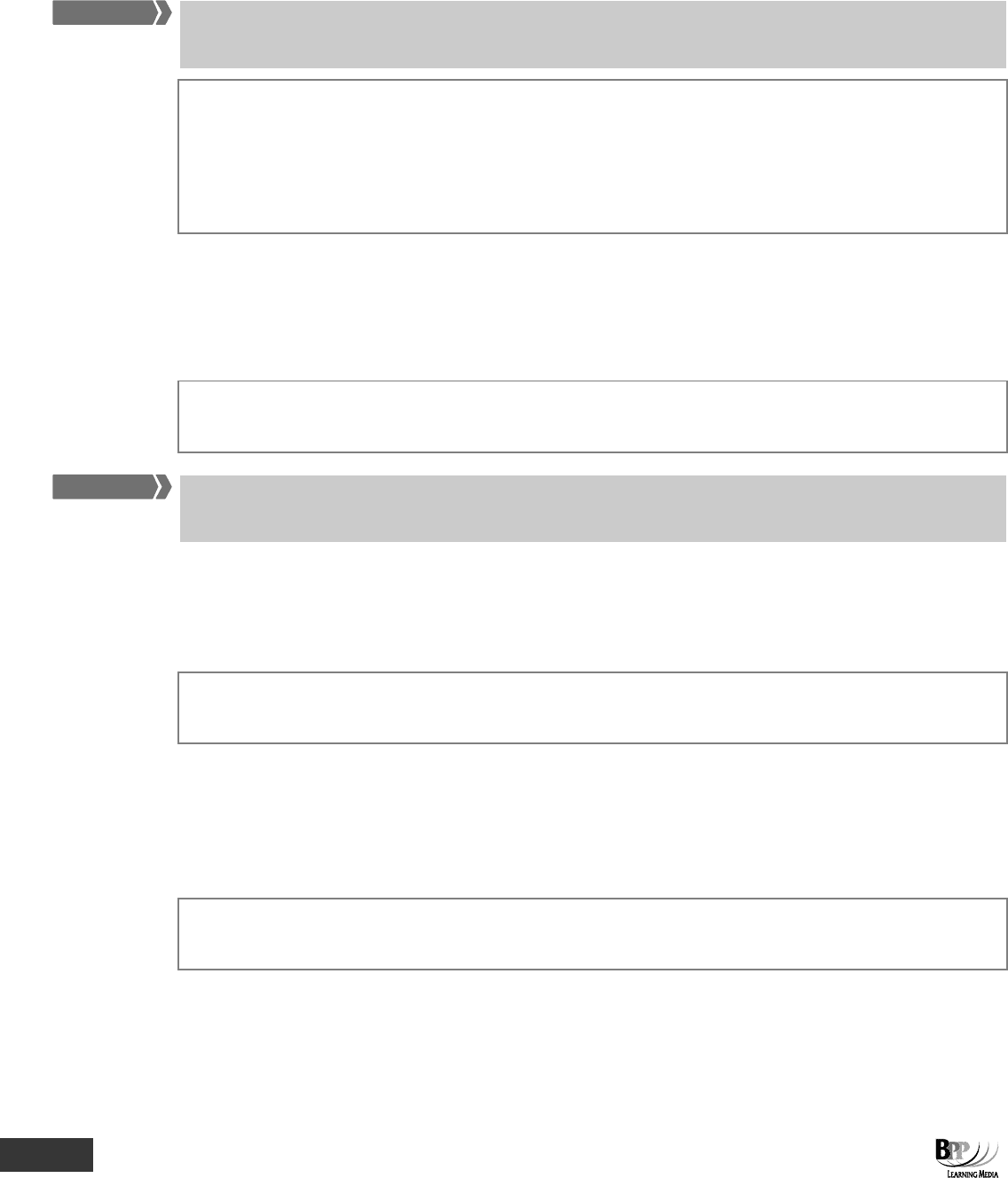
170
8: Variance analysis ⏐ Part B Standard costing
1 Variances
Variances measure the difference between actual results and expected results. The process by which the total difference
between standard and actual results is analysed is known as variance analysis.
A variance is 'the difference between a planned, budgeted, or standard cost and the actual cost incurred. The same
comparisons may be made for revenues’.
Variance analysis is defined as the 'evaluation of performance by means of variances, whose timely reporting should
maximise the opportunity for managerial action'.
CIMA Official Terminology
When actual results are better than expected results, we have a favourable variance (F). If, on the other hand, actual
results are worse than expected results, we have an adverse variance (A).
2 Direct material variances
The direct material total variance is the 'measurement of the difference between the standard material cost of the
output produced and the actual material cost incurred'. CIMA Official Terminology
The direct material total variance (the difference between what the output actually cost and what it should have cost, in
terms of material) can be divided into the direct material price variance and the direct material usage variance.
(a) The direct material price variance
This is the difference between the standard cost and the actual cost for the actual quantity of material
used or purchased. In other words, it is the difference between what the material did cost and what it
should have cost.
The direct material price variance is the 'difference between the actual price paid for the purchased materials and their
standard cost'. CIMA Official Terminology
(b) The direct material usage variance
This is the difference between the standard quantity of materials that should have been used for the
number of units actually produced, and the actual quantity of materials used, valued at the standard
cost per unit of material. In other words, it is the difference between how much material should have
been used and how much material was used, valued at standard cost.
The direct material usage variance 'measures efficiency in the use of material, by comparing standard material usage
for actual production with actual material used, the difference is valued at standard cost'. CIMA Official Terminology
Key terms
FA
S
T F
O
RWAR
D
Key term
Key term
Key term
FA
S
T F
O
RWAR
D
191433 www.ebooks2000.blogspot.com
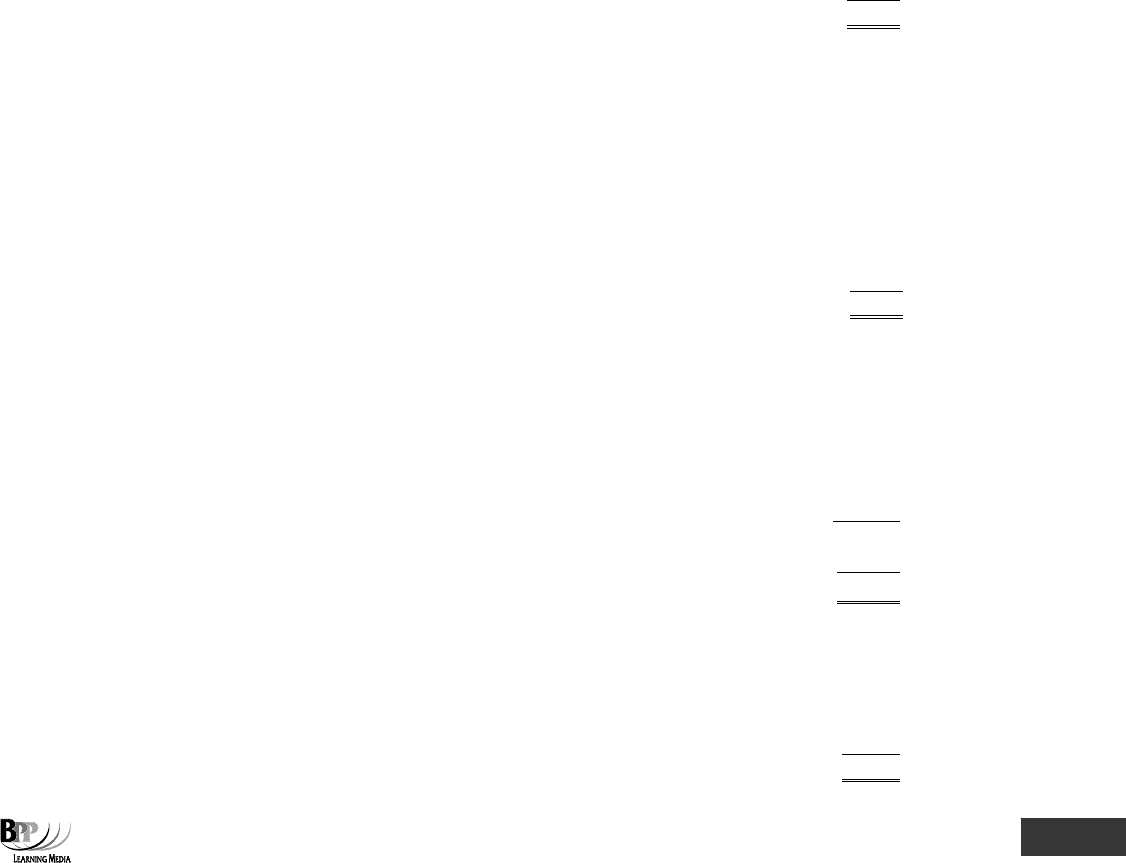
Part B Standard costing ⏐ 8: Variance analysis
171
2.1 Example: direct material variances
Product X has a standard direct material cost as follows.
10 kilograms of material Y at $10 per kilogram = $100 per unit of X.
During period 4, 1,000 units of X were manufactured, using 11,700 kilograms of material Y which cost $98,600.
Required
Calculate the following variances.
(a) The direct material total variance
(b) The direct material price variance
(c) The direct material usage variance
Solution
(a) The direct material total variance
This is the difference between what 1,000 units should have cost and what they did cost.
$
1,000 units should have cost (× $100)
100,000
but did cost
98,600
Direct material total variance
1,400
(F)
The variance is favourable because the units cost less than they should have cost.
Now we can break down the direct material total variance into its two constituent parts: the direct material price
variance and the direct material usage variance.
(b) The direct material price variance
This is the difference between what 11,700 kgs should have cost and what 11,700 kgs did cost.
$
11,700 kgs of Y should have cost (× $10)
117,000
but did cost
98,600
Material Y price variance
18,400
(F)
The variance is favourable because the material cost less than it should have.
(c) The direct material usage variance
This is the difference between how many kilograms of Y should have been used to produce 1,000 units of X and
how many kilograms were used, valued at the standard cost per kilogram.
1,000 units should have used (× 10 kgs)
10,000 kgs
but did use
11,700
kgs
Usage variance in kgs
1,700 kgs (A)
× standard cost per kilogram
× $10
Usage variance in $
$17,000
(A)
The variance is adverse because more material was used than should have been used.
(d) Summary
$
Price variance 18,400 (F)
Usage variance
17,000
(A)
Total variance
1,400
(F)
192433 www.ebooks2000.blogspot.com

172
8: Variance analysis ⏐ Part B Standard costing
2.2 Materials variances and opening and closing inventory
Suppose that a company uses raw material P in production, and that this raw material has a standard price of $3 per
metre. During one month 6,000 metres are bought for $18,600, and 5,000 metres are used in production. At the end of
the month, inventory will have been increased by 1,000 metres. In variance analysis, the problem is to decide the
material price variance. Should it be calculated on the basis of materials purchased (6,000 metres) or on the basis of
materials used (5,000 metres)? The answer to this problem depends on how closing inventories of the raw materials will be
valued.
(a) If closing inventories of raw materials are valued at standard cost, (1,000 units at $3 per unit) the price
variance is calculated on material purchases in the period.
(b) If closing inventories of raw materials are valued at actual cost (FIFO) (1,000 units at $3.10 per unit) the
price variance is calculated on materials used in production in the period.
2.3 When to calculate the direct material price variance
Since material inventories are usually valued at standard cost in a standard costing system, direct material price
variances are usually extracted at the time of receipt of the materials, rather than at the time of usage.
A full standard costing system is usually in operation and therefore the price variance is usually calculated on
purchases in the period. The variance on the full 6,000 metres will be written off to the costing income statement, even
though only 5,000 metres are included in the cost of production.
There are two main advantages in extracting the material price variance at the time of receipt.
(a) If variances are extracted at the time of receipt they will be brought to the attention of managers earlier
than if they are extracted as the material is used. If it is necessary to correct any variances then
management action can be more timely.
(b) Since variances are extracted at the time of receipt, all inventories will be valued at standard price. This
is administratively easier and it means that all issues from inventories can be made at standard price. If
inventories are held at actual cost it is necessary to calculate a separate price variance on each batch as it
is issued. Since issues are usually made in a number of small batches this can be a time-consuming task,
especially with a manual system.
2.3.1 Calculation of the direct material price variance
The price variance would be calculated as follows.
$
6,000 metres of material P purchased should cost (× $3)
18,000
but did cost
18,600
Price variance
600
(A)
FA
S
T F
O
RWAR
D
193433 www.ebooks2000.blogspot.com
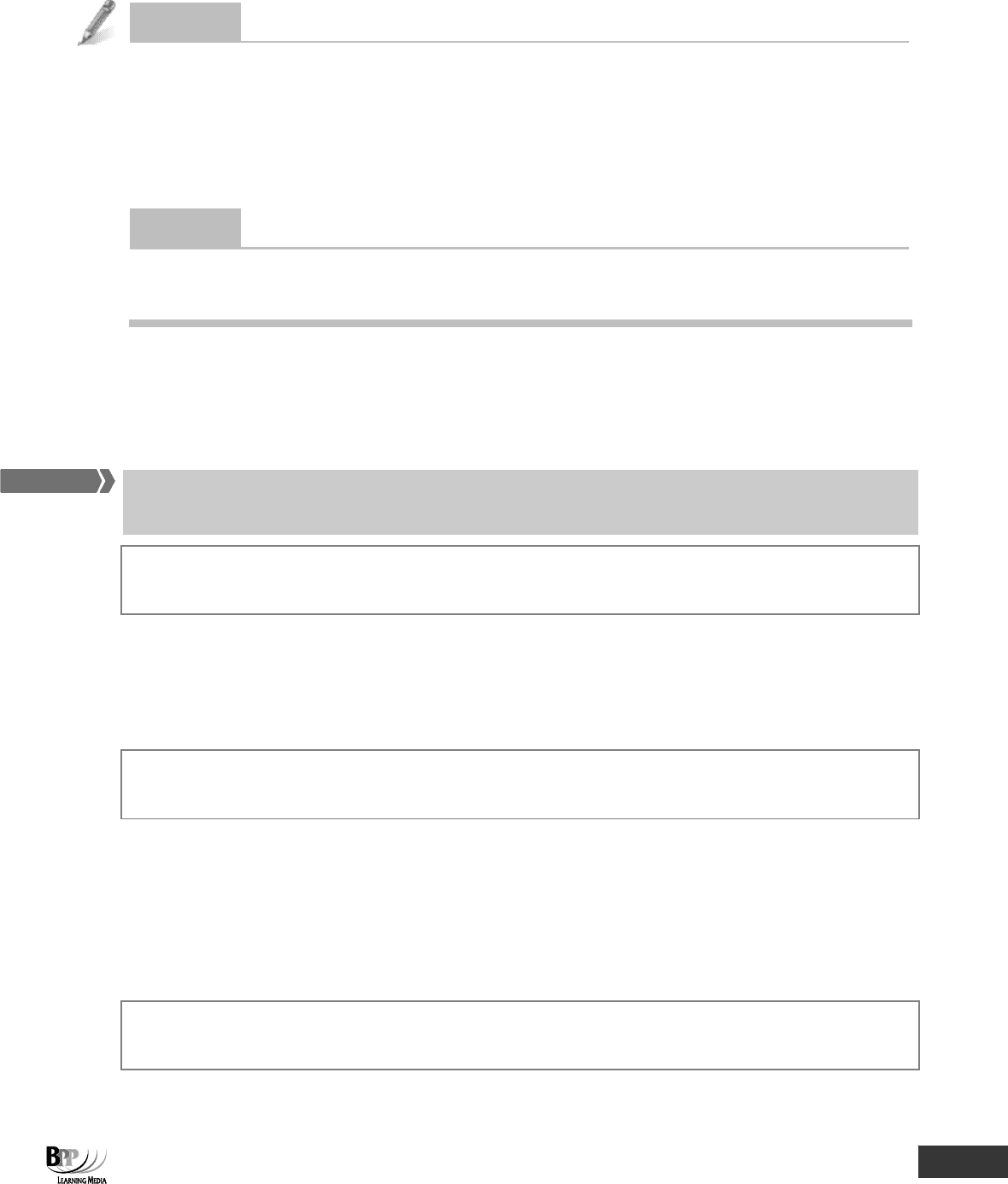
Part B Standard costing ⏐ 8: Variance analysis
173
Question
Material price variances
Select the correct words in each of the following sentences.
(a) If material inventories are valued at standard cost, the material price variance should be based on the materials
purchased/used in the period.
(b) If material inventories are valued at actual cost, the material price variance should be based on the materials
purchased/used in the period.
Answer
(a) purchased
(b) used
3 Direct labour variances
The calculation of direct labour variances is very similar to the calculation of direct material variances.
The direct labour total variance (the difference between what the output should have cost and what it did cost, in terms
of labour) can be divided into the direct labour rate variance and the direct labour efficiency variance.
The direct labour total variance 'indicates the difference between the standard direct labour cost of the output which
has been produced and the actual direct labour cost incurred'. CIMA Official Terminology
(a) The direct labour rate variance
This is similar to the direct material price variance. It is the difference between the standard cost and the
actual cost for the actual number of hours paid for.
In other words, it is the difference between what the labour did cost and what it should have cost.
The direct labour rate variance 'indicates the actual cost of any change from the standard labour rate of remuneration'.
CIMA Official Terminology
(b) The direct labour efficiency variance
This is similar to the direct material usage variance. It is the difference between the hours that should
have been worked for the number of units actually produced, and the actual number of hours worked,
valued at the standard rate per hour.
In other words, it is the difference between how many hours should have been worked and how many
hours were worked, valued at the standard rate per hour.
The direct labour efficiency variance is the 'standard labour cost of any change from the standard level of labour
efficiency'. CIMA Official Terminology
FA
S
T F
O
RWAR
D
Key term
Key term
Key term
194433 www.ebooks2000.blogspot.com

174
8: Variance analysis ⏐ Part B Standard costing
3.1 Example: direct labour variances
The standard direct labour cost of product X is as follows.
2 hours of grade Z labour at $5 per hour = $10 per unit of product X.
During period 4, 1,000 units of product X were made, and the direct labour cost of grade Z labour was $8,900 for 2,300
hours of work.
Required
Calculate the following variances.
(a) The direct labour total variance
(b) The direct labour rate variance
(c) The direct labour efficiency (productivity) variance
Solution
(a) The direct labour total variance
This is the difference between what 1,000 units should have cost and what they did cost.
$
1,000 units should have cost (× $10)
10,000
but did cost
8,900
Direct labour total variance
1,100
(F)
The variance is favourable because the units cost less than they should have done.
Again we can analyse this total variance into its two constituent parts.
(b) The direct labour rate variance
This is the difference between what 2,300 hours should have cost and what 2,300 hours did cost.
$
2,300 hours of work should have cost (× $5 per hr)
11,500
but did cost
8,900
Direct labour rate variance
2,600
(F)
The variance is favourable because the labour cost less than it should have cost.
(c) The direct labour efficiency variance
1,000 units of X should have taken (× 2 hrs)
2,000 hrs
but did take
2,300
hrs
Efficiency variance in hours
300 hrs (A)
× standard rate per hour
× $5
Efficiency variance in $
$1,500
(A)
The variance is adverse because more hours were worked than should have been worked.
(d) Summary
$
Rate variance
2,600 (F)
Efficiency variance
1,500
(A)
Total variance
1,100
(F)
195433 www.ebooks2000.blogspot.com

Part B Standard costing ⏐ 8: Variance analysis
175
3.2 Idle time variance
If idle time arises, it is usual to calculate a separate idle time variance, and to base the calculation of the efficiency
variance on active hours (when labour actually worked) only. It is always an adverse variance.
The direct labour idle time variance 'occurs when the hours paid exceed the hours worked and there is an extra cost
caused by this idle time. Its computation increases the accuracy of the labour efficiency variance'.
CIMA Official Terminology
A company may operate a costing system in which any idle time is recorded. Idle time may be caused by machine
breakdowns or not having work to give to employees, perhaps because of bottlenecks in production or a shortage of
orders from customers. When idle time occurs, the labour force is still paid wages for time at work, but no actual work is
done. Time paid for without any work being done is unproductive and therefore inefficient. In variance analysis, idle time
is always an adverse efficiency variance.
When idle time is recorded separately, it is helpful to provide control information which identifies the cost of idle time
separately, and in variance analysis, there will be an idle time variance as a separate part of the total labour efficiency
variance. The remaining efficiency variance will then relate only to the productivity of the labour force during the hours
spent actively working.
3.2.1 Example: labour variances with idle time
Refer to the standard cost data in Section 3.1. During period 5, 1,500 units of product X were made and the cost of
grade Z labour was $17,500 for 3,080 hours. During the period, however, there was a shortage of customer orders and
100 hours were recorded as idle time.
Required
Calculate the following variances.
(a) The direct labour total variance
(b) The direct labour rate variance
(c) The idle time variance
(d) The direct labour efficiency variance
Solution
(a) The direct labour total variance
$
1,500 units of product X should have cost (× $10)
15,000
but did cost
17,500
Direct labour total variance
2,500
(A)
Actual cost is greater than standard cost. The variance is therefore adverse.
(b) The direct labour rate variance
The rate variance is a comparison of what the hours paid should have cost and what they did cost.
$
3,080 hours of grade Z labour should have cost (× $5)
15,400
but did cost
17,500
Direct labour rate variance
2,100
(A)
Actual cost is greater than standard cost. The variance is therefore adverse.
FAST FORWARD
Key term
196433 www.ebooks2000.blogspot.com

176
8: Variance analysis ⏐ Part B Standard costing
(c) The idle time variance
The idle time variance is the hours of idle time, valued at the standard rate per hour.
Idle time variance = 100 hours (A) × $5 = $500 (A)
Idle time is always an adverse variance.
(d) The direct labour efficiency variance
The efficiency variance considers the hours actively worked (the difference between hours paid for and idle time
hours). In our example, there were (3,080 – 100) = 2,980 hours when the labour force was not idle. The variance
is calculated by taking the amount of output produced (1,500 units of product X) and comparing the time it
should have taken to make them, with the actual time spent actively making them (2,980 hours). Once again, the
variance in hours is valued at the standard rate per labour hour.
1,500 units of product X should take (× 2hrs)
3,000 hrs
but did take (3,080 – 100)
2,980
hrs
Direct labour efficiency variance in hours
20 hrs (F)
× standard rate per hour
× $5
Direct labour efficiency variance in $
$100
(F)
(e) Summary
$
Direct labour rate variance
2,100 (A)
Idle time variance
500 (A)
Direct labour efficiency variance
100
(F)
Direct labour total variance
2,500
(A)
Remember that, if idle time is recorded, the actual hours used in the efficiency variance calculation are the active hours
worked and not the hours paid for.
Question
Variances
Growler Co is planning to make 100,000 units per period of product AA. Each unit of AA should require 2 hours to
produce, with labour being paid $11 per hour. Attainable work hours are less than clock hours, so 250,000 hours have
been budgeted in the period.
Actual data for the period was:
Units produced 120,000
Direct labour cost $3,200,000
Clock hours 280,000
(a) The labour rate variance is $
(b) The labour efficiency variance is $
(c) The idle time variance is $
Important!
197433 www.ebooks2000.blogspot.com
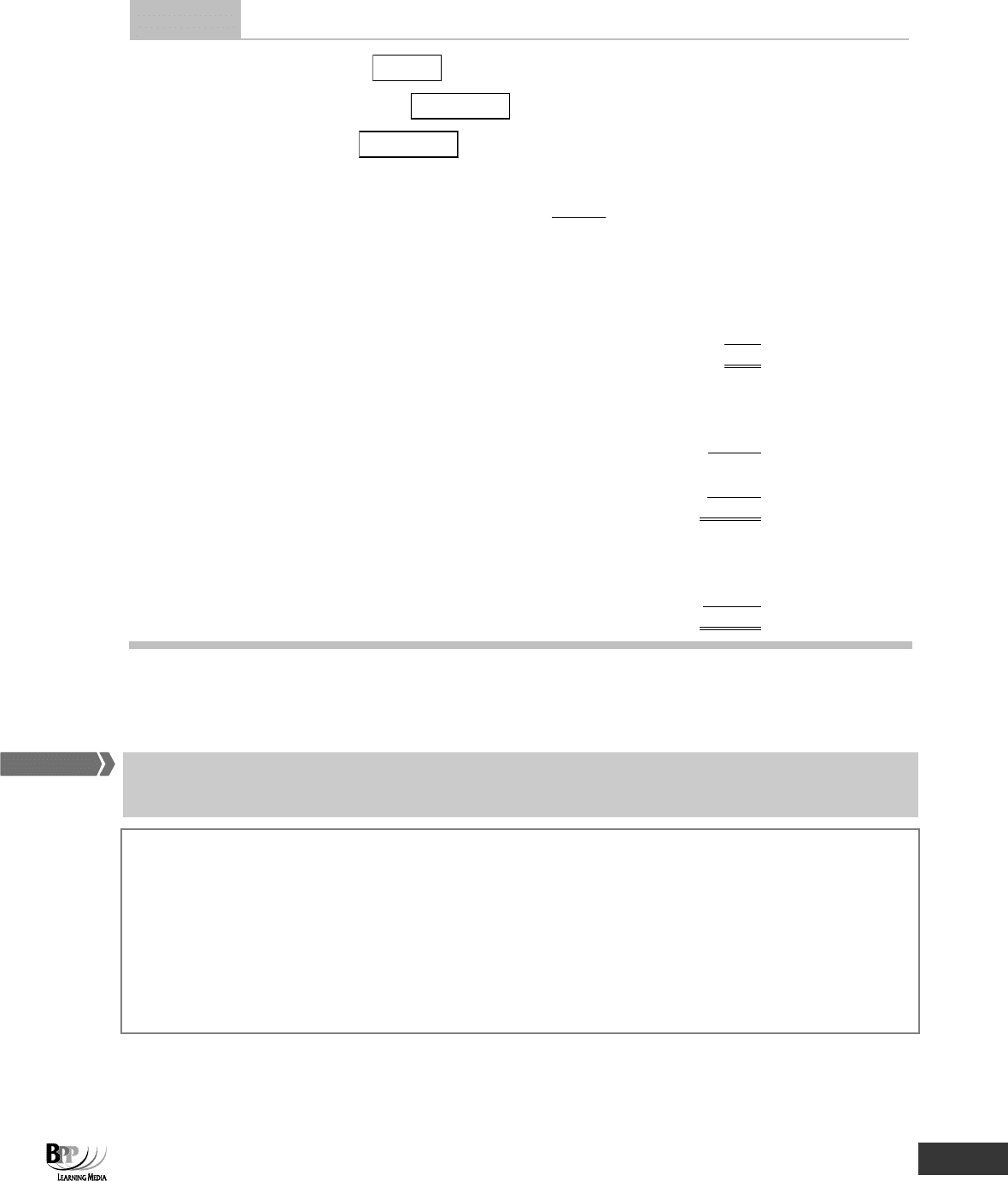
Part B Standard costing ⏐ 8: Variance analysis
177
Answer
(a) The labour rate variance is $
120 (A)
(b) The labour efficiency variance is $
176,000 (F)
(c) The idle time variance is $
161,000 (A)
Workings
The information means that clock hours have to be multiplied by
000,250
000,200
(80%) in order to arrive at a realistic
efficiency variance.
(a)
Labour rate variance
$'000
280,000 hours should have cost (
×
$11)
3,080
but did cost
3,200
Labour rate variance
120
(A)
(b)
Labour efficiency variance
120,000 units should have taken (
×
2 hours)
240,000 hrs
but did take (280,000
×
80%)
224,000
hrs
16,000 hrs (F)
×
$11
Labour efficiency variance
$176,000
(F)
(c)
Idle time variance
280,000
×
20%
56,000 hrs
×
$11
$616,000
(A)
4 Variable overhead variances
The
variable overhead total variance
can be subdivided into the variable overhead
expenditure variance
and the
variable overhead
efficiency
variance
(
based on
active hours
).
The
variable production overhead total variance
'measures the difference between variable overhead that should be
used for actual output and variable production overhead actually used'.
The
variable production overhead expenditure variance
'indicates the actual cost of any change from the standard rate
per hour'.
The
variable production overhead efficiency variance
is the 'standard variable overhead cost of any change from the
standard level of efficiency'.
CIMA
Official Terminology
FA
S
T F
O
RWAR
D
Key terms
198433 www.ebooks2000.blogspot.com

178
8: Variance analysis ⏐ Part B Standard costing
4.1 Example: variable overhead variances
Suppose that the variable production overhead cost of product X is as follows.
2 hours at $1.50 = $3 per unit
During period 6, 400 units of product X were made. The labour force worked 820 hours, of which 60 hours were
recorded as idle time. The variable overhead cost was $1,230.
Calculate the following variances.
(a) The variable production overhead total variance
(b) The variable production overhead expenditure variance
(c) The variable production overhead efficiency variance
Since this example relates to variable production costs, the total variance is based on actual units of production. (If the
overhead had been a variable selling cost, the variance would be based on sales volumes.)
$
400 units of product X should cost (
×
$3)
1,200
but did cost
1,230
Variable production overhead total variance
30
(A)
4.2 Subdividing the variable overhead total variance
In many variance reporting systems, the variance analysis goes no further, and expenditure and efficiency variances are
not calculated. However, the adverse variance of $30 may be explained as the sum of two factors.
(a) The hourly rate of spending on variable production overheads was higher than it should have been, that is
there is an
expenditure variance
.
(b) The labour force worked inefficiently, and took longer to make the output than it should have done. This
means that spending on variable production overhead was higher than it should have been, in other words
there is an
efficiency (productivity) variance
. The variable production overhead efficiency variance is
exactly the same, in hours, as the direct labour efficiency variance, and occurs for the same reasons.
It is usually assumed that
variable overheads are incurred during active working hours
, but are not incurred during idle
time (for example the machines are not running, therefore power is not being consumed, and no direct materials are being
used). This means in our example that although the labour force was paid for 820 hours, they were actively working for only
760 of those hours and so variable production overhead spending occurred during 760 hours.
4.2.1 The variable overhead expenditure variance
This is the difference between the amount of variable overhead that should have been incurred in the actual hours actively
worked, and the actual amount of variable overhead incurred. Refer to the data in Section 4.1.
$
760 hours of variable production overhead should cost (
×
$1.50)
1,140
but did cost
1,230
Variable production overhead expenditure variance
90
(A)
4.2.2 The variable overhead efficiency variance
If you already know the direct labour efficiency variance, the variable overhead efficiency variance is exactly the same in
hours, but priced at the variable production overhead rate per hour. In the example in Section 4.1, the efficiency variance
would be as follows.
199433 www.ebooks2000.blogspot.com
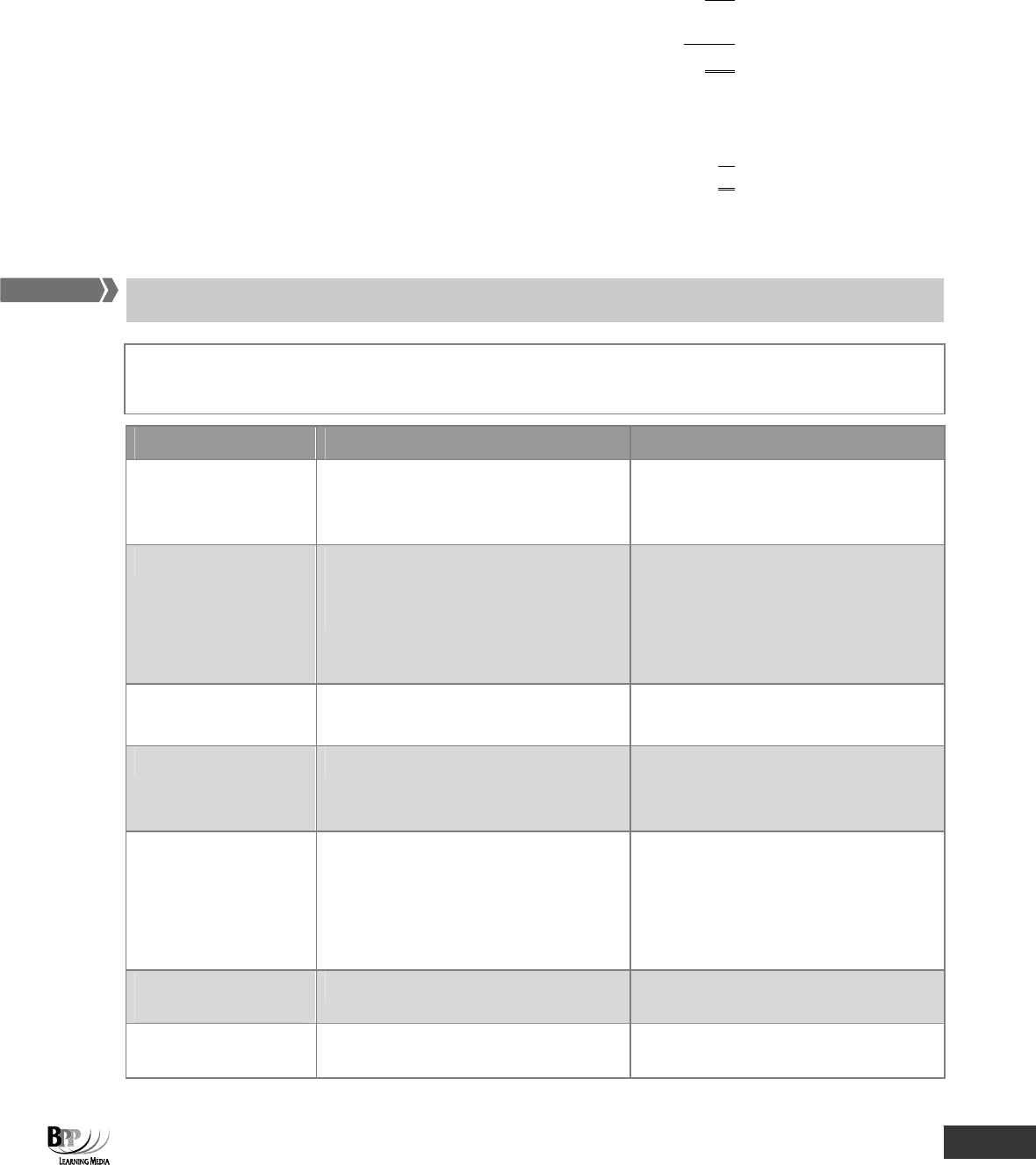
Part B Standard costing ⏐ 8: Variance analysis
179
400 units of product X should take (
×
2hrs)
800 hrs
but did take (active hours)
760
hrs
Variable production overhead efficiency variance in hours
40 hrs (F)
×
standard rate per hour
× $1.50
Variable production overhead efficiency variance in $
$60
(F)
4.2.3 Summary
$
Variable production overhead expenditure variance
90 (A)
Variable production overhead efficiency variance
60
(F)
Variable production overhead total variance
30
(A)
5 The reasons for cost variances
There are a wide range of
reasons
for the occurrence of adverse and favourable cost
variances
.
This is not an exhaustive list and an assessment question might suggest other possible causes. You should review the
information provided and select any causes that are consistent with the reported variances.
Variance Favourable Adverse
(a) Material price
Unforeseen discounts received
More care taken in purchasing
Change in material standard
Price increase
Careless purchasing
Change in material standard
(b) Material usage
Material used of higher quality than standard
More effective use made of material
Errors in allocating material to jobs
Defective material
Excessive waste
Theft
Stricter quality control
Errors in allocating material to jobs
(c) Labour rate
Use of apprentices or other workers at a rate
of pay lower than standard
Wage rate increase
Use of higher grade labour
(d) Idle time The idle time variance is always adverse
Machine breakdown
Non-availability of material
Illness or injury to worker
(e) Labour efficiency
Output produced more quickly than
expected because of work motivation, better
quality of equipment or materials, or better
methods.
Errors in allocating time to jobs
Lost time in excess of standard allowed
Output lower than standard set because of
deliberate restriction, lack of training, or
sub-standard material used
Errors in allocating time to jobs
(f) Variable overhead
expenditure
Change in types of overhead or their cost Change in type of overhead or their cost
(g) Variable overhead
efficiency
As for labour efficiency (if based on labour
hours)
As for labour efficiency (if based on labour
hours)
Assessment
focus point
FA
S
T F
O
RWAR
D
200433 www.ebooks2000.blogspot.com
